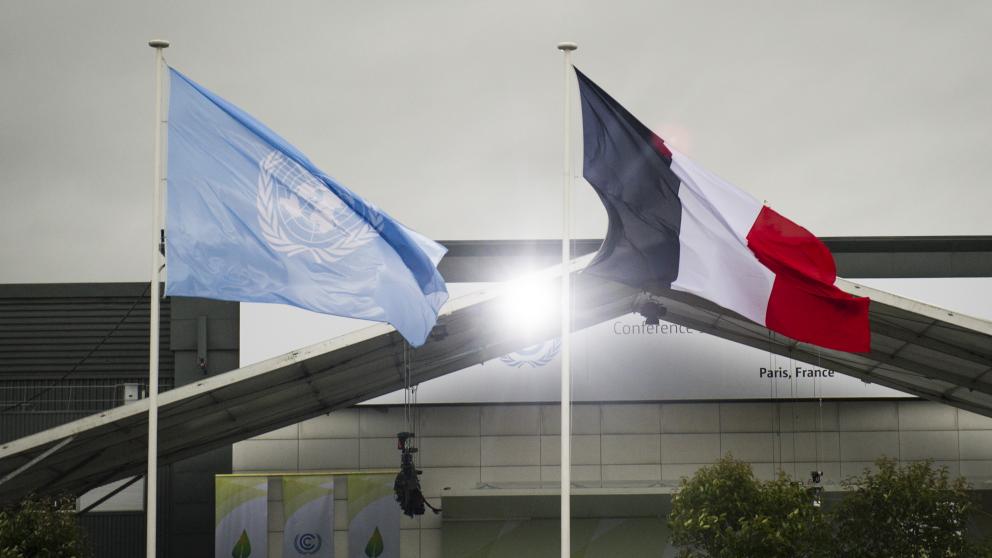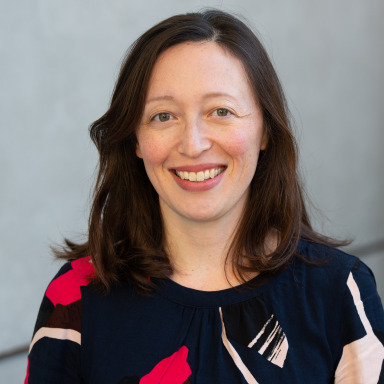COP21: IASS Researchers Stress Co-Benefits of Reducing Air Pollution for Climate, Health, and Sustainable Development
16.12.2015
Climate summit in Paris

Reducing air pollution can combat climate change, save lives, and help achieve sustainable development – this was the message stressed by IASS Managing Scientific Director Mark Lawrence at several side events at the climate change summit COP21 in Paris, which ended last weekend with the adoption of a new climate change agreement. It is the first pact to commit all 196 Parties to the United Nations Framework Convention on Climate Change to cut carbon emissions. Despite the fact that fast action on CO2 needs to remain the top priority for avoiding catastrophic global warming, the agreement also highlights additional opportunities for addressing climate change in a holistic manner, including reducing emissions from short-lived climate-forcing pollutants (SLCPs) such as black carbon (soot), methane, hydrofluorocarbons, and ground-level ozone.
At a side event jointly organised by the United Nations Economic Commission for Europe (UNECE) and the IASS, UNECE Executive Secretary Christian Friis Bach called for ways to “address air pollution and climate change together.” He said that the global goals formulated in the new agreement and the 2030 Agenda should be pursued with vigour, but the goals of national governments regarding the health impacts of air pollution must not be neglected. Mark Lawrence recommended that we now need “more focus on implementing than investigating”, emphasising that the basic scientific evidence is sufficiently clear on where action is needed to achieve a triple-win effect for climate, health and development. Although there are still many details that do need further scientific research, he stressed that it is unquestionable that multiple benefits can be achieved by reducing SLCPs – substances that not only warm the climate, but also lead to millions of premature deaths each year.

Hanne Bjurstrøm, Norway’s Special Envoy for Climate Change and currently co-chair of the Climate and Clean Air Coalition to Reduce Short-Lived Climate Pollutants (CCAC), as well as political representatives from Poland and Georgia shared their countries’ approaches to reducing SLCP emissions, in particular black carbon pollution from the home heating and transport sectors. The deputy head of Poland’s COP21 delegation, climate negotiator Tomasz Chruszczow, summarised the convictions of the panel when he said that to protect both air quality and the global climate, we need synergies not only between various actors, but also between UN institutions. Only with a combined effort can we develop and spread the necessary knowledge and awareness to act on climate and air quality in the most economic and synergetic way.
At a side event co-organised by the IASS and the CCAC, action on SLCPs was also the order of the day. With ministry representatives from South America, Africa and Asia participating, the event highlighted the role the CCAC plays in bringing countries together to share and learn from each other’s experiences – successes and obstacles – in implementing SLCP reduction measures on the ground. The Ministes from Uruguay and a high-level representative from Peru spoke about their initiatives to reduce black carbon and other harmful pollutants from their diesel bus fleets, and ministers from Cote d’Ivoire and Nigeria reported on their national action plans to reduce SLCPs. Moreover, Bangladesh reported that 50 per cent of its polluting brick kilns have been retrofitted with clean technologies in order to reduce emissions from both black carbon and CO2. IASS Managing Director Mark Lawrence and Edward Cameron from the non-profit organisation Business for Social Responsibility represented the role of CCAC non-state actors at this event. Underscoring the seven million premature deaths caused by air pollution each year, Lawrence spoke about ways to mobilise action through engagement with civil society and cooperation with local scientists.
At another COP21 side event hosted by the Institute for Global Environmental Strategies (IGES), which focused on “Making an Integrated Approach to Air Pollution and Climate Change a Reality in Asia”, Mark Lawrence showcased the work of the IASS project Sustainable Atmosphere for the Kathmandu Valley (SusKat). This project is aimed at reducing black carbon pollution from the brick-making, transport, and waste sectors to reduce the associated extreme health burden and regional warming.
Commenting on the agreement reached on 12 December, Mark Lawrence stated that the consensus decision gave him “renewed confidence that global societies will support each other in making these difficult transformations.” The only realistic possibility we have of limiting global warming to less than 2°C in this century is a combination of rapid, extensive decarbonisation and an extreme reduction of warming pollutants like black carbon, methane and ozone, he said. This will require transforming global systems like energy and transport, as well as transforming our individual lifestyles: “There is no way around this – climate engineering techniques cannot be expected to contribute significantly in the coming few decades, if ever.”
The IASS is applying a transdisciplinary approach to develop such transformational pathways in a holistic and inclusive manner, taking into account economic aspects, ecosystems, human health, sustainable development and human dignity.
More information:
On the work of the IASS in the run up to COP21:
- Long-term climate goals: Decarbonisation, carbon neutrality, and climate neutrality
- The 2015 Paris Climate Change Agreement – UN Climate Conference in Bonn Brings Clarity for Legal Architecture
- A Clear View for Kathmandu: Improving Air Quality in the Kathmandu Valley
Blog post on COP21:
- Kathleen Mar: Impressions from a first-timer at COP21
